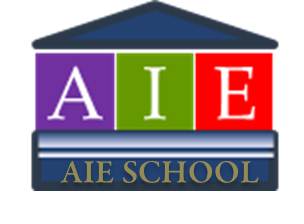
Glossary of Theater Terms
After you read and study these terms, look for the fun activities located at the bottomof this page!Acoustics : How sound moves in a room depends on its size and shape and the amount and position of sound-absorbing and reflecting material.
Acting area :The area within the performance space where the actor moves in full view of the audience.
Aisle : A passage through the seating.
Apron : Section of the stage floor which projects towards or into the auditorium.
Backstage: The part of the stage and theater which is out of the sight of the audience.
Blackout: Shut down of stage lighting.
Blocking: Arranging moves to be made by the actors.
Bridge: A walkway, giving access to technical and service areas above the stage.
Casting: Director or others choosing actors to perform the character.
Color Mixing: Combining two or more lighting gels.
Company: The cast, crew and other staff associated with a show.
Cue: The command given to technical departments to carry out a particular order. Or the signal an actor uses to begin a line or movement.
Downstage:
1) The part of the stage nearest to the audience.
2) A movement towards the audience.Dresser: Helps actors with taking care of costumes and costume changes during the performance.
Dress Rehearsal: A full rehearsal, with everything brought together.
Footlights: Lights that are sometimes recessed into the front edge of the stage, used to stop shadows made by overhead lighting.
Gain:
1) The level of volume given to a signal or of a system.
"Heads on Stage": A shouted warning (often just "Heads!") for staff to be aware of actions above them.
House:
1) The audience. ( " How full is the house tonight ? )
2) The auditorium ( " The house is now open, please do not cross the stage.") House Lights: The theater lighting which is usually faded right before a show.
Microphone: An instrument that is used to change voice waves into electrical pulses and on to an amplifier.
Offstage: A motion near the closest side of the stage from the middle.
Prompt Book: The main copy of a script or score, containing every one actors and technical cues, used by stage management.
Prompt Desk: The center of control in a show.
Props: (Properties) Furnishings, set dressings, and any other item large and small which can't be as any scenery, electrical, or wardrobe. Props that are handled by actors are known as hand props, props which are mostly kept in an actors costume are known as personal props.
Proscenium Arch: An opening in a wall that stands between a stage and an auditorium in some theaters; the frame through which the audience sees a play.
Public Address System: The sound system of an auditorium. The "P.A."
Rear of House(ROH): Backstage area of an auditorium.
Spotlight: A light that shines down on a stage that shines on a group of people or one person.
Stage left/right: the audience's point of view when looking at a stage.
Stage Manager: In charge of making sure things get done.
Sound Check: Testing the sound system before a show and checking each speaker.
Runners: Two curtains in the middle of the stage running horizontally, particularly those used closest to the audience. People hired to do different things during the production of the play.
Technical Rehearsal: Most often the first time the play is rehearsed in the auditorium, with the lights, scenery and sound, Costumes are used sometimes.
'교육연극' 카테고리의 다른 글
| 영어연극예술교육연구소 유치원 초등학생 영어연극 영어뮤지컬 동아리 교과기반 예술융합영어교실 창의적인 드라마 란? (0) | 2006.09.08 |
|---|---|
| 교육장면사진 (0) | 2005.06.25 |
| Creative dramatics (0) | 2005.06.23 |
| The Wonderful Wizard of Oz (0) | 2005.06.23 |
| Alice in Wonderland (0) | 2005.06.23 |


댓글